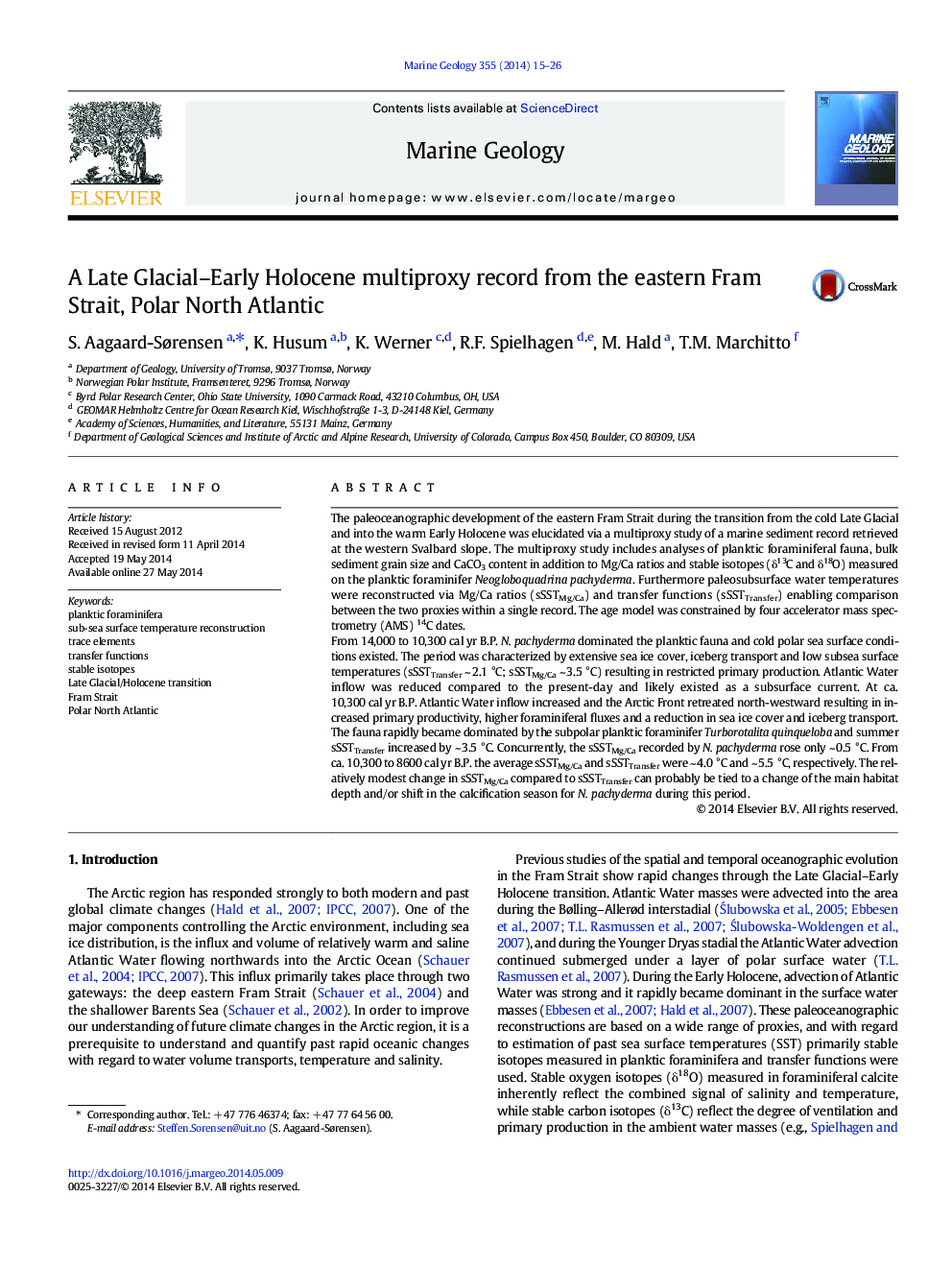| کد مقاله | کد نشریه | سال انتشار | مقاله انگلیسی | نسخه تمام متن |
|---|---|---|---|---|
| 4718260 | 1639097 | 2014 | 12 صفحه PDF | دانلود رایگان |

• Late Glacial – Early Holocene paleoceanography in eastern Fram Strait.
• Water mass property changes examined via multiple proxies.
• Average Mg/Ca (N. pachyderma) water temperatures exhibit modest change (~0.5°C).
• Average transfer function derivedwater temperatures exhibit major change (~3.5°C).
• Different proxies linked to different water depths and primary production seasons.
The paleoceanographic development of the eastern Fram Strait during the transition from the cold Late Glacial and into the warm Early Holocene was elucidated via a multiproxy study of a marine sediment record retrieved at the western Svalbard slope. The multiproxy study includes analyses of planktic foraminiferal fauna, bulk sediment grain size and CaCO3 content in addition to Mg/Ca ratios and stable isotopes (δ13C and δ18O) measured on the planktic foraminifer Neogloboquadrina pachyderma. Furthermore paleosubsurface water temperatures were reconstructed via Mg/Ca ratios (sSSTMg/Ca) and transfer functions (sSSTTransfer) enabling comparison between the two proxies within a single record. The age model was constrained by four accelerator mass spectrometry (AMS) 14C dates.From 14,000 to 10,300 cal yr B.P. N. pachyderma dominated the planktic fauna and cold polar sea surface conditions existed. The period was characterized by extensive sea ice cover, iceberg transport and low subsea surface temperatures (sSSTTransfer ~ 2.1 °C; sSSTMg/Ca ~ 3.5 °C) resulting in restricted primary production. Atlantic Water inflow was reduced compared to the present-day and likely existed as a subsurface current. At ca. 10,300 cal yr B.P. Atlantic Water inflow increased and the Arctic Front retreated north-westward resulting in increased primary productivity, higher foraminiferal fluxes and a reduction in sea ice cover and iceberg transport. The fauna rapidly became dominated by the subpolar planktic foraminifer Turborotalita quinqueloba and summer sSSTTransfer increased by ~ 3.5 °C. Concurrently, the sSSTMg/Ca recorded by N. pachyderma rose only ~ 0.5 °C. From ca. 10,300 to 8600 cal yr B.P. the average sSSTMg/Ca and sSSTTransfer were ~ 4.0 °C and ~ 5.5 °C, respectively. The relatively modest change in sSSTMg/Ca compared to sSSTTransfer can probably be tied to a change of the main habitat depth and/or shift in the calcification season for N. pachyderma during this period.
Journal: Marine Geology - Volume 355, 1 September 2014, Pages 15–26